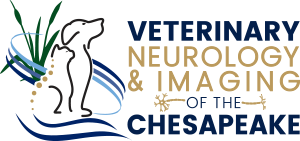Presumptive disk disease in chondrodystrophic dogs
Presumptive disk disease in chondrodystrophic dogs is one of the most common neurological presentations in small animal veterinary medicine. There is a spectrum of presentation to our clinics from simple back pain to the extreme cases. Being able to present clients with accurate prognosis for these cases is very helpful. The most valuable tool at the outset is the neurological examination. Accurately assessing the neurological condition of the patient can mean the difference between emergency referral or medical treatment.
Our philosophy is that dogs with presumptive IVDD that are less than 6 years old and have strong motor should be treated medically. The dogs that cannot rise on their own or are non-ambulatory paraparetic or completely paralyzed would benefit with surgery for several reasons. The first is that these dogs treated surgically have a much more rapid recovery than dogs treated medically. We see functional recovery in surgically treated dogs in 10-14 days while those dogs treated medically usually recover in 4 weeks. Return to function decreases the comorbidities of urinary tract infections, urine/fecal scald and muscle contraction. Another reason for surgery in these dogs is that recurrence of clinical signs due to relapse of the offending disk is less than 3% in dogs treated surgically while relapse occurs in more than 30% in dogs treated medically.
Recurrence of signs secondary to an additional disk can and does occur in dogs treated both surgically and medically. Statistics are not available for dogs treated medically but a recent article in dogs treated surgically, dogs treated surgically with fenestration, recurred an average of 12.7%. There was a difference in recurrence between dogs fenestrated only at the extrusion site (17%) versus dogs fenestrated at multiple sites (7.5%).


